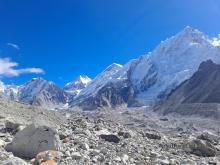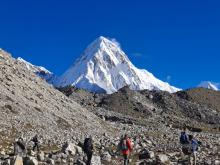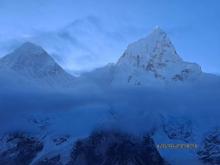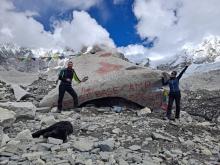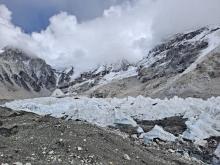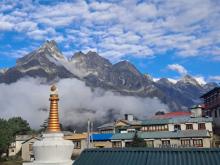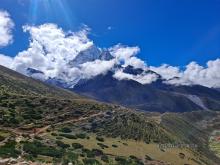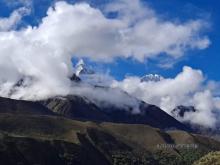Dominated by the great Himalayan mountain range, Nepal is one of those destinations that leave a lasting impression, not only for its overwhelming nature but also for the warmth of its people.
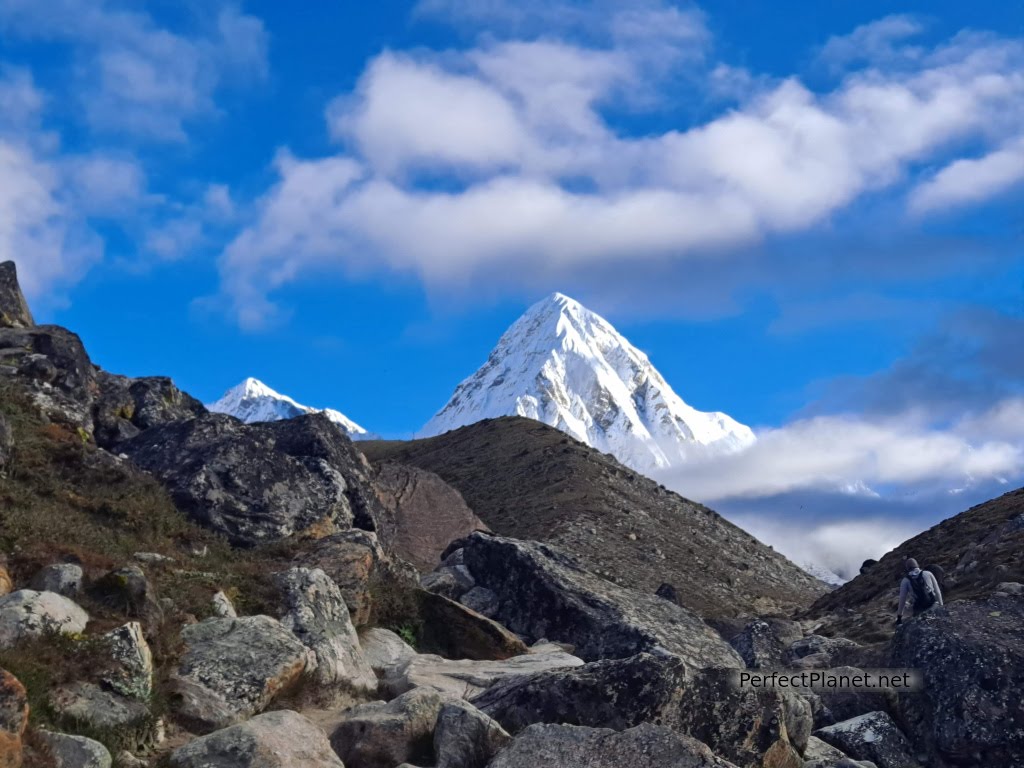
Pumori
You may be interested in Budgeting for the EBC trek,tips for saving money
The highest mountains in the world, remote monasteries, sacred sites, medieval cities, Newar architecture, ethnic diversity, rice terraces, jungle and extreme sports await you.
If you are a nature lover Nepal is your destination, come and see it with us!
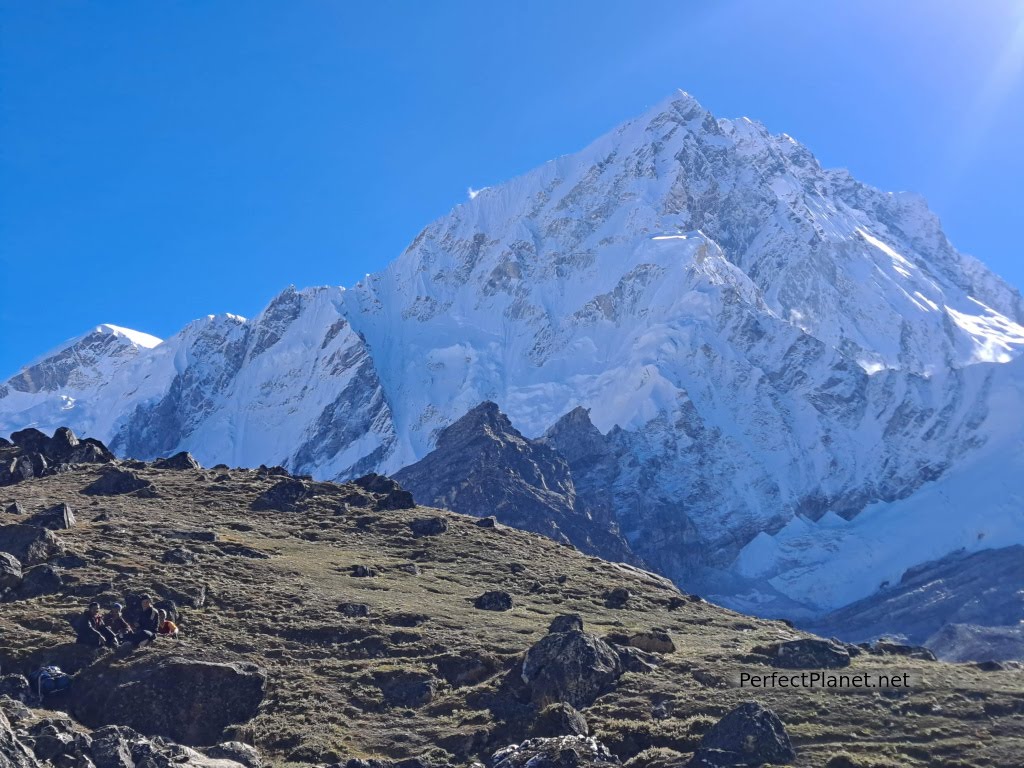
Nuptse
Visa
All citizens need a tourist visa to enter the country except for those from India and children under 10 years of age. The only documents required to enter Nepal are a passport valid for at least 6 months and a visa.
You have three options for obtaining a tourist visa. You can apply for it before your trip online, through this link, at the Nepalese embassy in your country, or on arrival at the airport.
If you choose the latter, remember that before paying the fee to enter the country, you have to enter your details on a website for which the Nepalese government provides you with computers where you are going to have to queue, so we recommend that you do this procedure online beforehand from Spain at the following link.
Once you have filled in the forms, you have to print them out or take a photo of the screen (if the printer does not work) to return to the immigration counter and make the payment. Payment can be made in dollars or euros, but always in cash.
Depending on the number of days you are going to stay in the country, the price of the visa varies: for 15 days it's 30$/pax, for 30 days it's 50$/pax and for 90 days it's 125$/pax.
Next to the immigration desk there is a cash machine and a bank if you want to change currency. Although the exchange rate is good, it charges a 3.7% fee, so we recommend that you change only what you need and change the rest in Thamel.
If you apply for your visa from the Embassy in Spain, remember that it will be valid for entry for a maximum of 6 months from the date of issue.
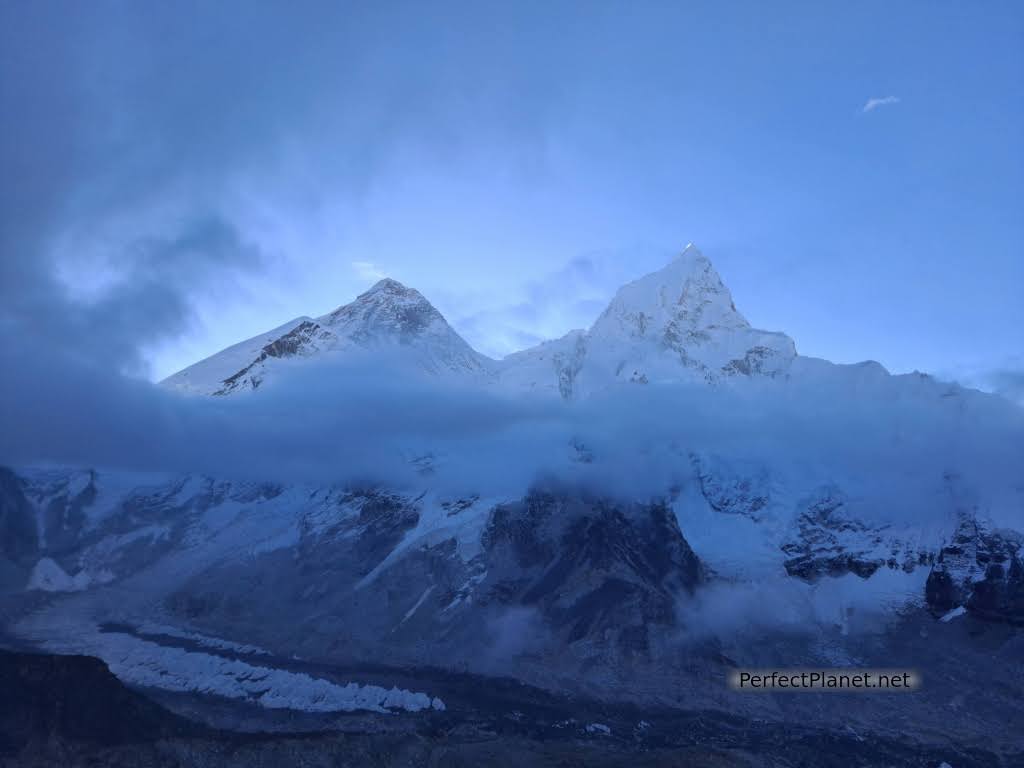
Everst and Nuptse
Money
The official currency in Nepal is the Nepalese rupee (€1=139 rupees) but dollars and euros are also accepted for major payments such as at travel agencies.
ATMs are only available in the more touristy towns and cities, such as the Thamel district of Kathmandu. However, it's a good idea to carry enough cash, as card payments are not widely accepted and carry a 13% surcharge. We had no problem withdrawing money in Thamel, but despite having a revolut card, we were charged a commission of 625 rupees, so we recommend carrying cash from Spain.
When using ATMs it is advisable to find out the minimum commission per transaction beforehand, as although the exchange rate is good you may be in for surprises. To avoid surprises we recommend using travel cards such as Revolut, for more info.
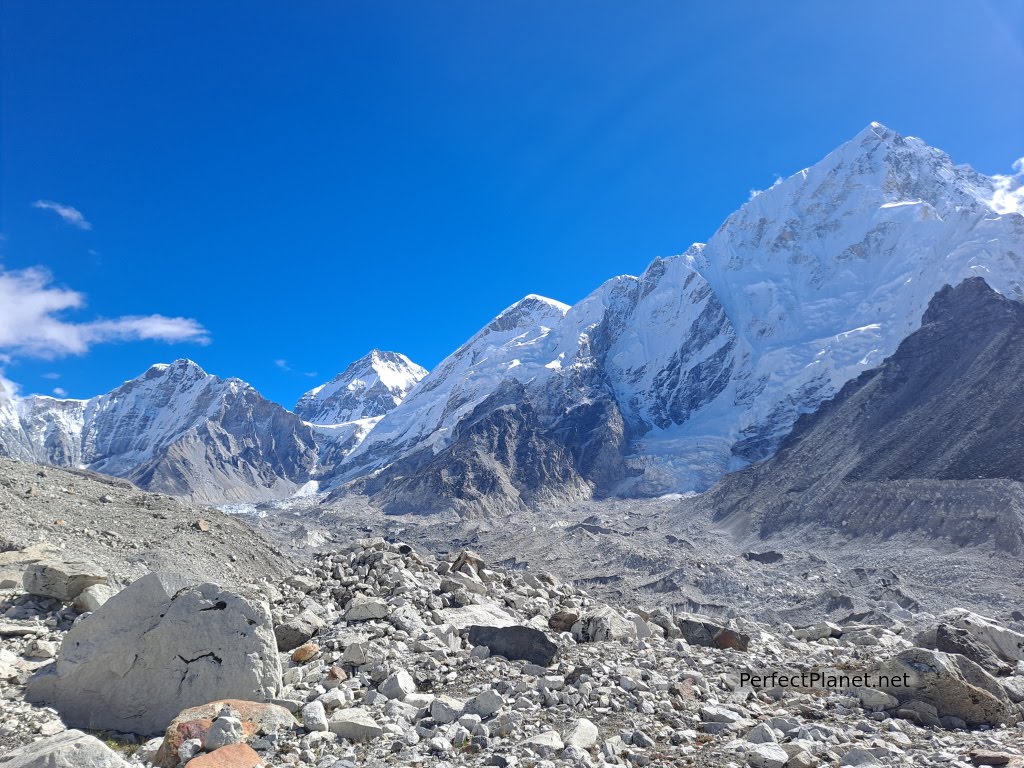
Nuptse
Language
The official language is Nepali, although English is widely spoken and it is easy to communicate in English in tourist areas.
However, we always recommend that you make a small effort to try to learn the official language, in this case Nepali, to try to integrate.
Words like namaste (hello), thank you (danyabad), hungry (poclayo), slow (vistari), pretty (ramro cha), beautiful (molaman pario), delicious (mitosa) or spectacular (atisunder) can make your trip much more enjoyable.
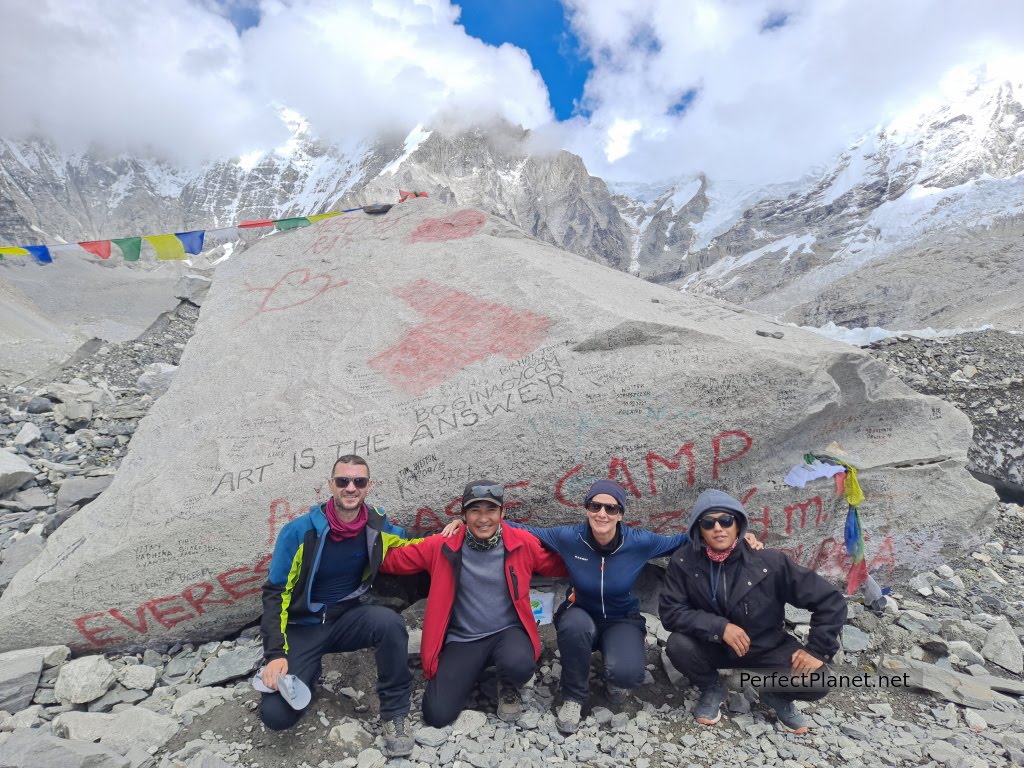
EBC
Transport
Nepal's infrastructure is poor. Although the Kathmandu Valley has the best, transport is still tedious due to heavy traffic, so be patient and enjoy every journey.
Bus. The cheapest option is always the public bus. If you have time it is always the best option as it gives you the chance to interact with other travellers. On the bus there is always a driver and a conductor who informs you of each stop hanging on the door of the bus and to whom you have to pay the fare. They are very friendly and help you with any problems. One way Kathmandu - Bhaktapur is 50 rupees/pax.
The main bus stop near Thamel is Ratna Park, from where many buses leave to get around the city and the surrounding area.
Taxi. If you are short of time and prefer to go more comfortably, taxis in the city are quite cheap, although they are still the most expensive way to get around the city. Remember that you should always haggle, often for half the price you are quoted. A ride from Thamel to the airport is about 700 rupees and from Thamel to the Monkey Temple between 400 and 500 rupees.
In Nepal there is also an UBER called PATHAO, you just have to download the app on your mobile phone with a Nepali card. It is a simple app with relatively fair prices. Once you request the service, the nearest driver calls you (sometimes speaking English) and in 5 minutes arrives at your location. Sometimes you have to haggle with the driver when he arrives, but this is not usually the case.
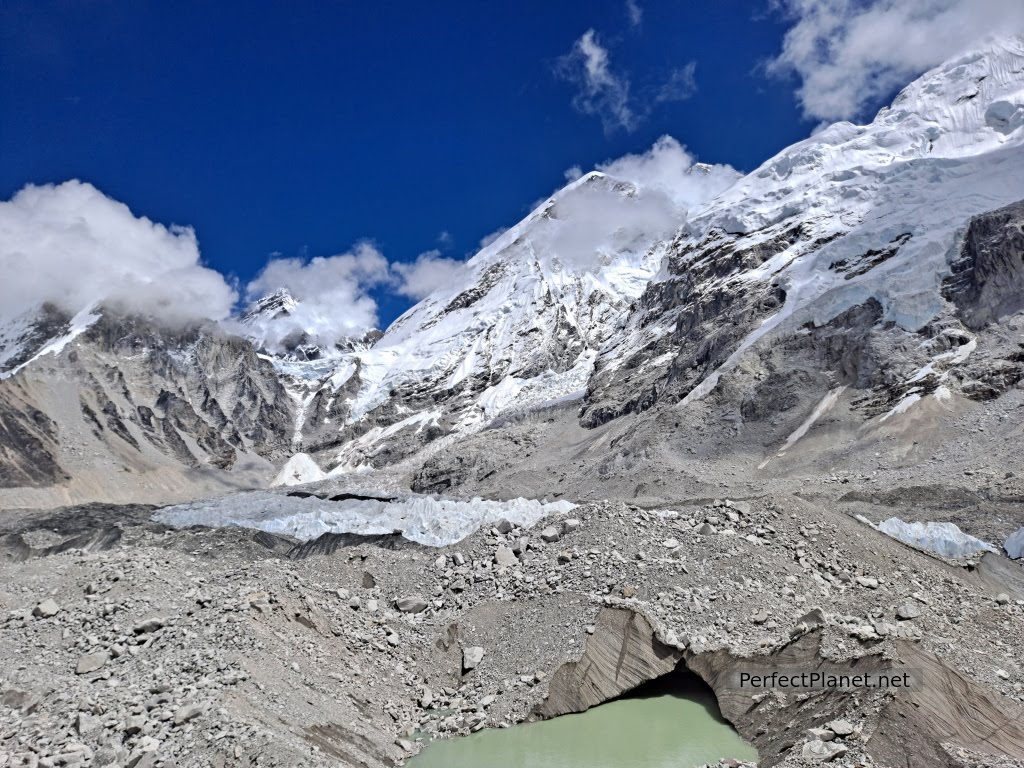
EBC
Tuk tuk. These simple three-wheeled motorised means of transport are the order of the day in Nepal. They are cheap but more uncomfortable as pollution in Kathmandu is high. We only recommend them for short journeys. A word of advice: bargain.
Rick Shaw. This traditional means of transport is very typical in the centre of Thamel. It is a cart attached to a bicycle in which the driver has to make a great effort pedalling, its owners usually have fewer resources than those of motorised vehicles and are very economical.
Aeroplane. Air travel is the best option for long journeys within Nepal and is inexpensive depending on the destination. A ticket between Kathmandu and Phokara can cost around 75€ 25 minutes (by bus 8 hours), however from Kathmandu to Lukla we could talk about up to 180€/trip.
There are not many direct international flights to Kathmandu and if you want to fly in high season you have to book well in advance. On this occasion we flew with Qatar Airways with a stopover in Doha.
We bought the flight in January to fly in September. The airline changed several times the flight schedule from Doha to Kathmandu and vice versa, so we recommend that you pay attention to the notices that you will receive by email to reconfirm them. The price we booked was the basic price (980€/pax) which includes checked baggage up to 25 kilos but not your seat for which you will have to pay at least 20€ each way and person. We didn't do this and when we checked in we had no problem travelling together.
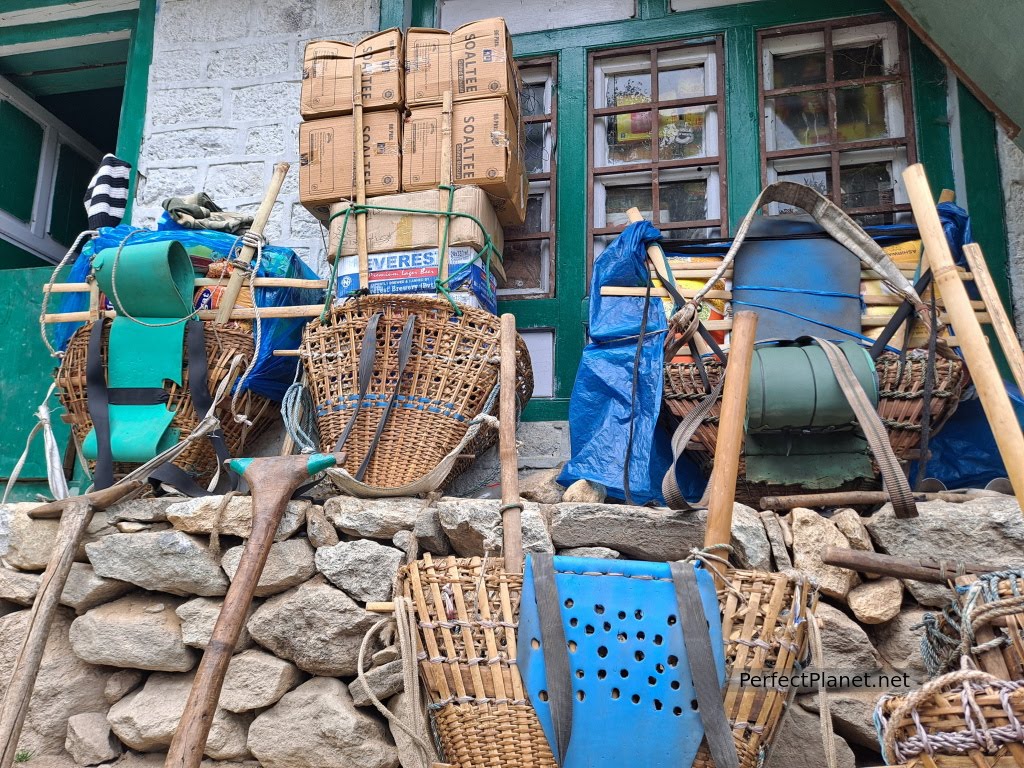
Carrying baskets
You can also enter Nepal through the land borders with India. To obtain a visa, you must have passport-style photographs and pay for the visa in cash, preferably in US dollars.
Your passport must be valid for at least six months and have a full blank visa page.
Traffic in and around Kathmandu is chaotic and frantic. The rules are one rule, i.e. the biggest gets priority, trucks and buses, then cars and motorbikes, then bicycles and pedestrians. If you are not sure about crossing the road, join a group of people to make sure they see you and stop.
You can rent a motorbike or bike to get around the city but we don't recommend it, once you see the traffic you will understand.
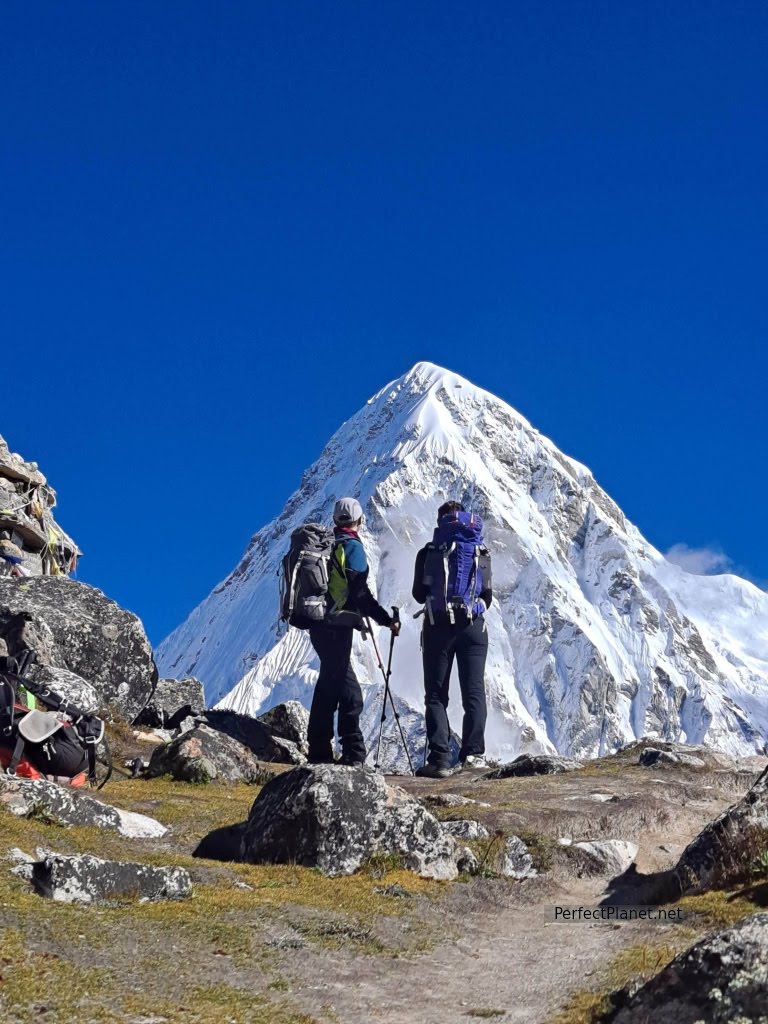
Pumori
Accommodation
Finding good value for money accommodation in Nepal is easy. We recommend using an app like booking for your bookings.
In Kathmandu it is essential that you take into account the opinions regarding noise, especially if you are staying in Thamel.
Thamel is the backpacker district of Kathmandu, is very well located and offers all services, from money exchange, banks, shops, travel agencies, bars and restaurants. It's a comfortable and safe neighbourhood but with a lot of traffic, so we advise you not to stay on the main streets but in one of the back alleys or on the outskirts of Thamel. We stayed at Shine Homestay Francophone Family and it was a great choice. It is located just 5 minutes walk from Thamel. It is a new building run by a very nice family with clean, comfortable and quiet rooms. It has a beautiful roof terrace where you can have a coffee, practice yoga or just enjoy the view. The neighbourhood is cheaper than Thamel with supermarket, shops and an amazing bakery and pastry shop for breakfast, Fresh Bake.
In Bhaktapur we recommend staying in the centre, near Durbar Square, at the Hotel Bhaktapur Inn. Remember to tell them how many days you are going to stay so that they can write it down, as they will constantly ask you for it at the entrance gates to the city and if it is not in order you will have to pay the entrance fee again (1,800 rupees/pax).
If you are trekking on your own it is very important to consider if you are going in high season, if so, book well in advance, for example on the EBC trek although the number of accommodations is still growing there is not enough to cover the demand in the main months, October-November, April-May.
You may be interested in Budgeting for EBC. Tips to save money
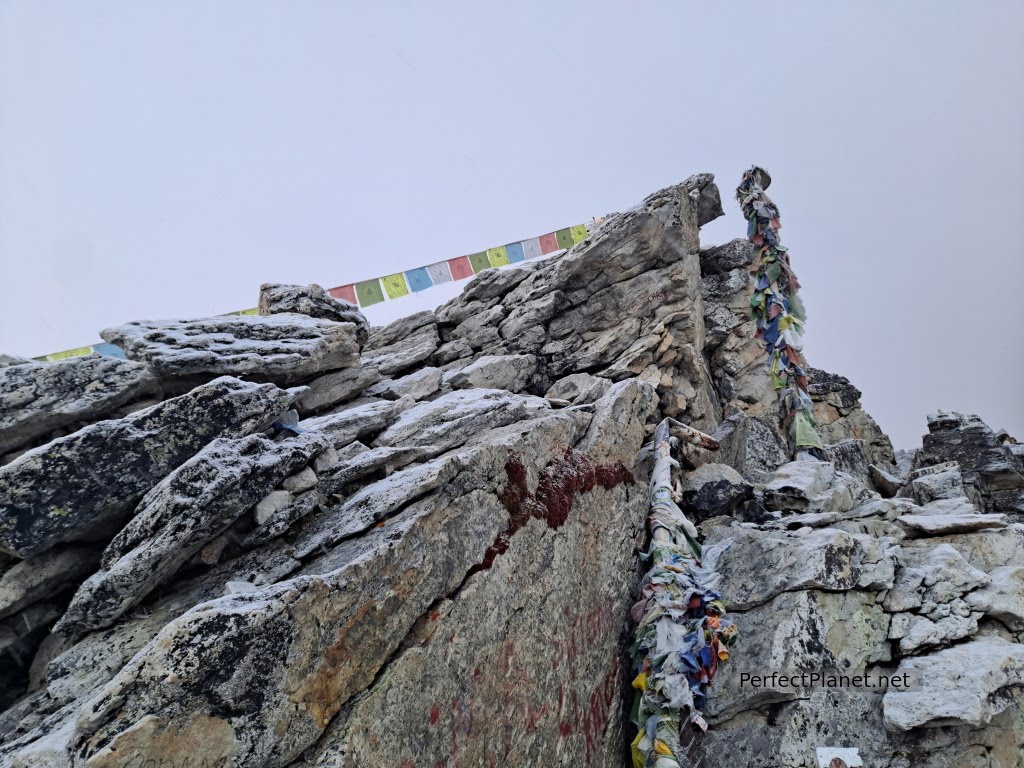
Kala Pathar
Health and Safety
Nepal is a very safe country, but always remember to take basic precautions. Before and during your trip, we recommend that any information related to safety, health, administrative formalities such as visa issuance, etc. be verified with the Ministry of Foreign Affairs of the traveller's country.
Always contact the international disease service before you travel. There are currently no compulsory vaccinations, although yellow fever is recommended if you come from a country where this disease is not endemic, although other vaccinations such as typhoid, hepatitis A and cholera are recommended.
Don't forget a first aid kit with the essentials: medicines, betadine, antibiotic ointment, syringes, frontal, bandages, plasters, scissors, mosquito repellent, sun cream.
If you are going to trek at high altitude, it is advisable to take acetazolamide, this active ingredient acts as a diuretic, preventing oedema. The best known is diamox, it is not a preventive medicine so it is not advisable to start taking it before you start trekking as it has side effects, take it only when it is really necessary. You can get it in any pharmacy in Thamel, ask in several because prices vary a lot from one to another.
It is very important that you take out good insurance before you start your trip and that it suits your needs. On this occasion we took out IATI MOCHILERO (on our website you will find the banner to get a discount) which includes cover for helicopter rescue up to 5,400 metres above sea level. Don't take a gamble.
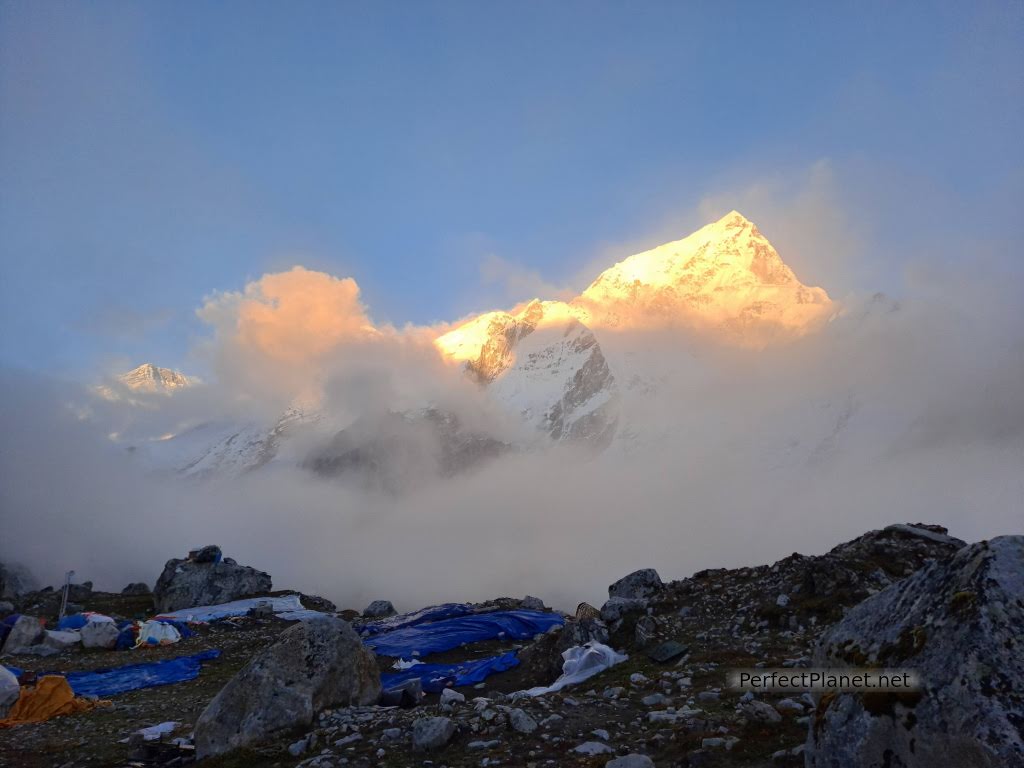
Sunset in Gorakshep
Gastronomy
Nepal's cuisine is influenced by its neighbouring countries, often based on dishes of Tibetan or Indian origin, but also by the different ethnic groups that make up the country that enrich these dishes, Thus the spicier Newar food is more widespread in the Kathmandu Valley with dishes as rich as Set similar to Dal Bhat but with uncooked flaked rice and raw dried beans, Bara (mashed potato with egg), Chatamari (similar to pizza) or the incredible curd or juju dhau, half yoghurt half cottage cheese. Remember not to ask for it spicy because for the Nepalese, not spicy is already spicy.
The official main dish throughout the country is Dal Bhat, cooked rice (bhat) with lentil soup (dhal) accompanied by fried chapati and vegetables, sometimes potato and cabbage stew or spinach and carrot stew. It is usually eaten in its vegan version but can be served with chicken. Sometimes it is also served with a fermented vegetable stew called Gundruk with mustard, radish and cauliflower.
A very nutritious Nepalese dish, as the saying goes, Dal Bhat power 24 hours!
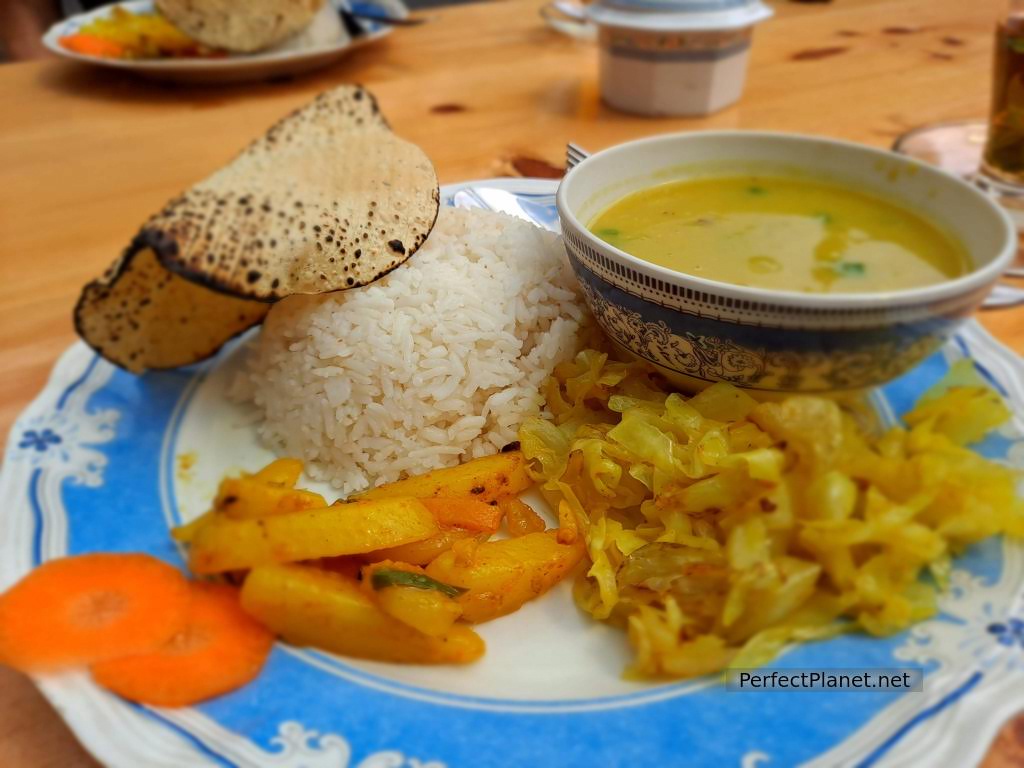
Dal Bhat
Momos. These fried or steamed dumplings filled with vegetables or meat are one of the most typical dishes in Nepal, you can find them in any restaurant, in fact there are some that specialise only in momos.
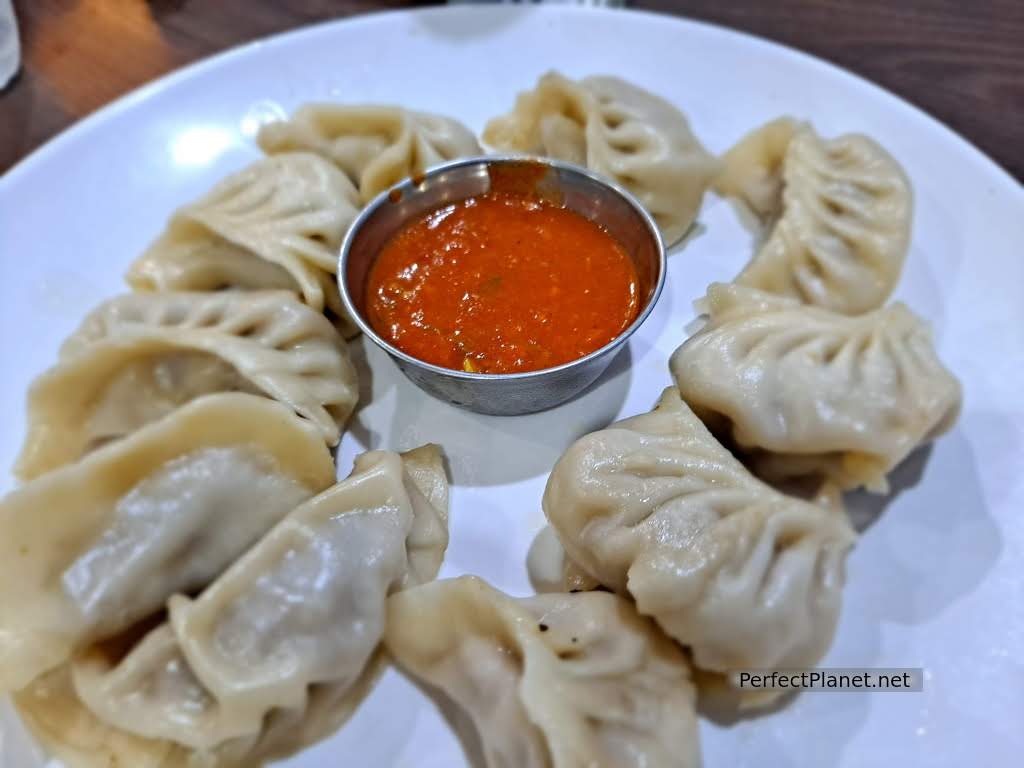
Momos
Stews. Sherpa stew. This potato and vegetable stew is one of the most restorative dishes along with Dal Bhat after or during a long walk.
Soups. Especially in the high mountain areas soups like Thukpa with noodles, vegetables and if you prefer chicken, yak or goat meat are common. Along with this soup of Tibetan Chinese origin, you can find other spectacular soups such as garlic soup or noddles with egg.
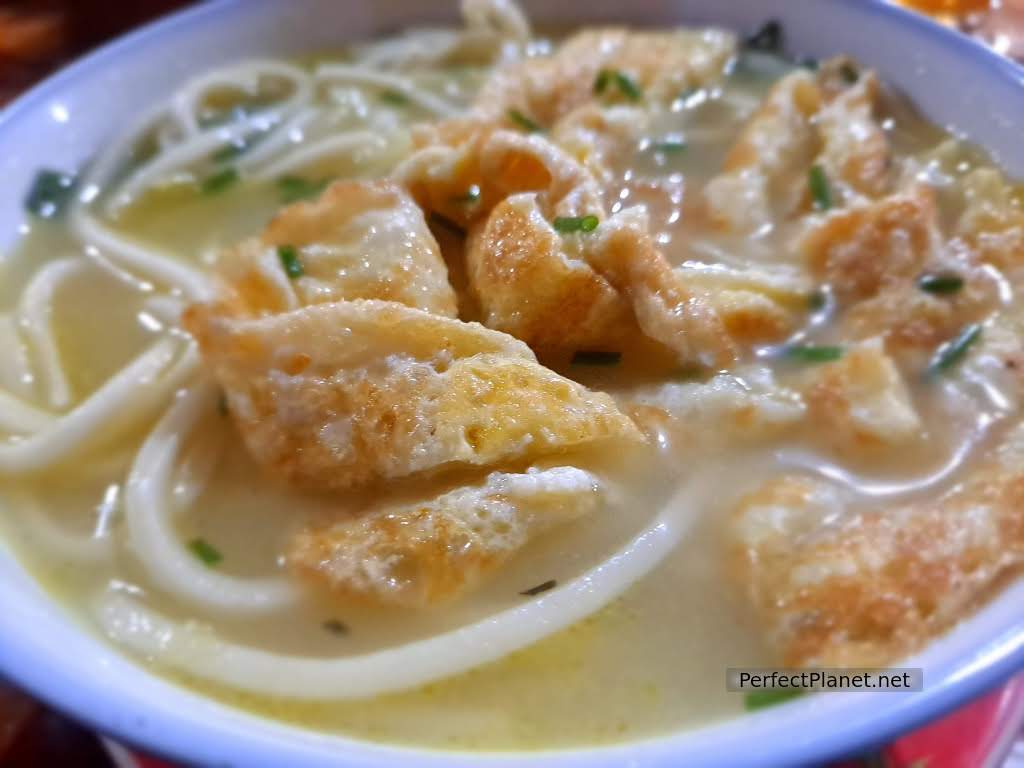
Soup
Breakfast. Along with basic breakfasts of eggs and toast with potato stew or fried potatoes, you can find pancakes or the incredible Tibetan bread, a sweet dough similar to our churro served with honey or jam.
You can also try samko, a water porridge with corn or rye flour.
Drinks. It is a tradition in Nepal to offer a hot drink, either tea or coffee, to the guest. The variety of teas and infusions is large even in the high mountains. If you are very daring you can try the traditional Nepalese tea with butter, for the rest the infusions of fresh mint, ginger, lemon and honey are delicious. You can also opt for black tea, Darjeeling or green tea, and coffee is often served instantaneously.
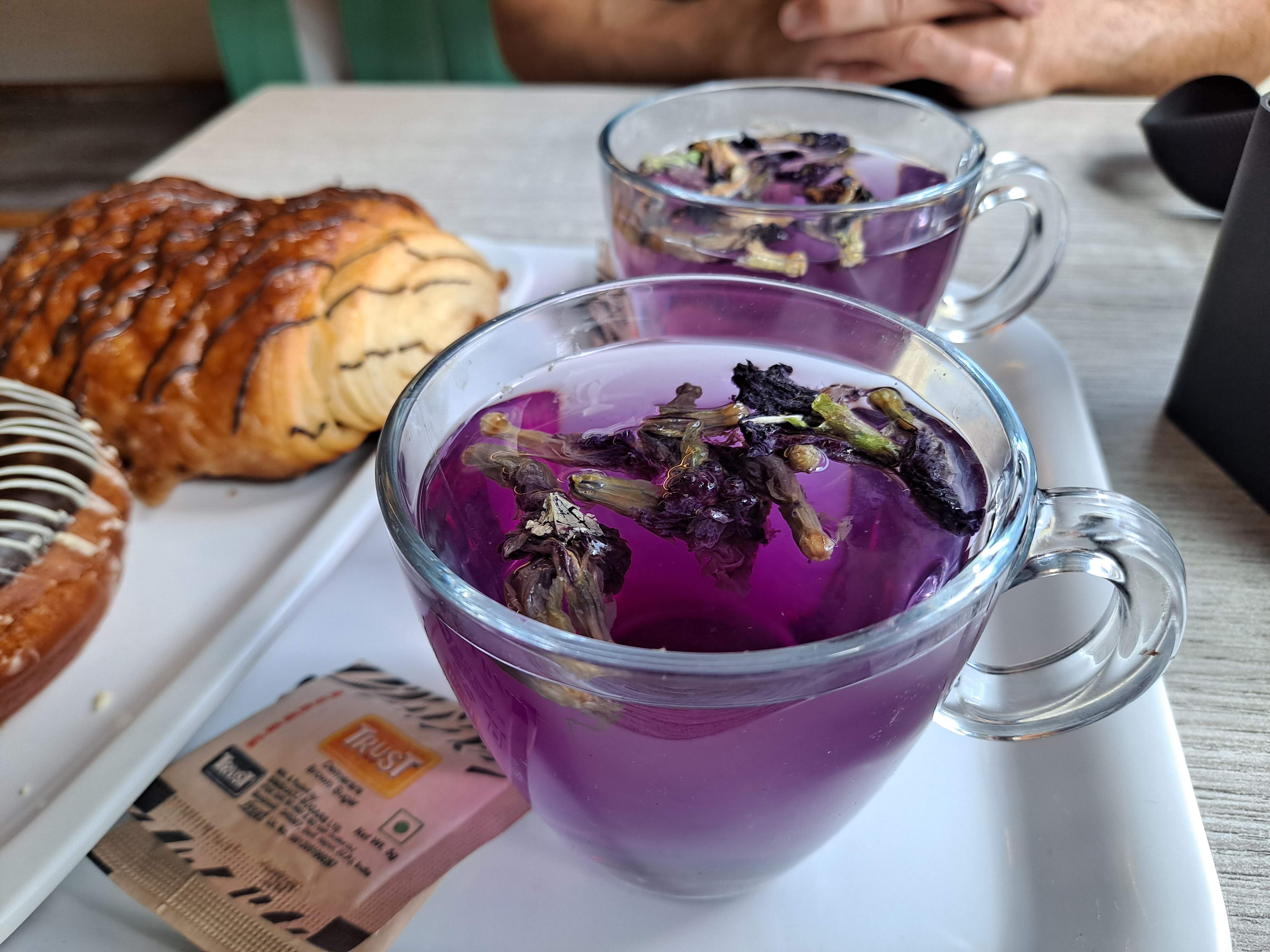
Darjeeling te
Beers. Nepalese beers are mild, Gorka, Everest, Nepal Ice, but you can also find San Miguel or Heineken.
Conectivity
On arrival at the airport we bought a 35 gigabyte Namaste 4g card for 30 days for 1,200 rupees which gave us coverage up to almost 4,000 metres.
If you are trekking above 4,000m it is advisable to buy an Everestlink card to complement the Namaste as above 4,000m the prices for wifi and other services get quite expensive even though they sometimes don't work properly.
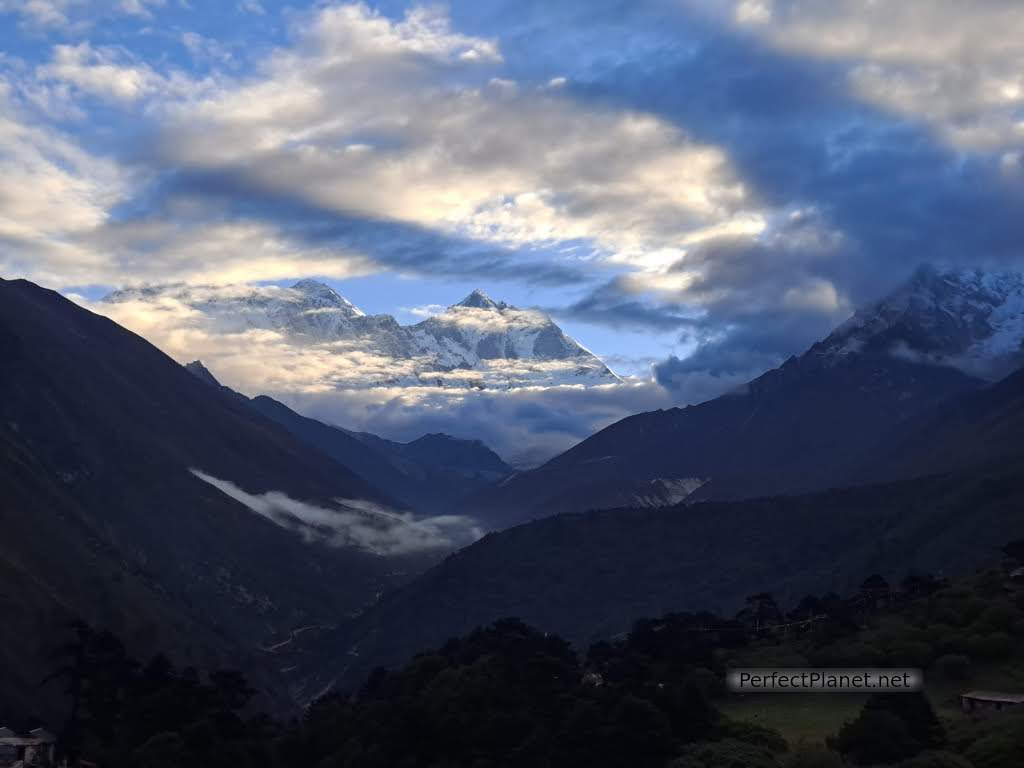
Tengboche sunrise
Activities
Nepal is a paradise for outdoor activities, famous for impressive trekking in the Himalayas, climbing or the best mountain biking circuits, but you can also do other activities such as canyoning, bungee jumping, paragliding, kayaking or rafting.
Cultural tourism also has a place in this wonderful country where you have the possibility to enjoy the perfect coexistence of Buddhist and Hindu culture which is reflected in the daily life of the very devout Nepalese population.
You may be interested in TREKKING BASE CAMPO EVEREST PREPARATIONS
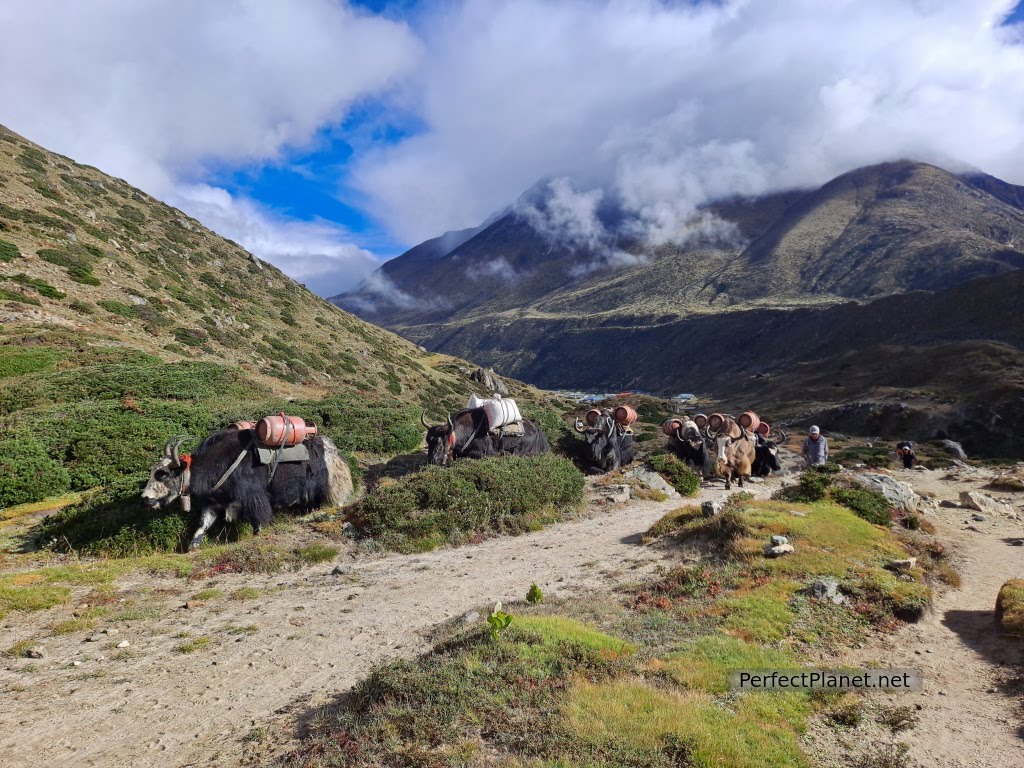
Yaks
Society
Nepalese society is governed by a caste system that defines the country's social classes. Nepal is one of the poorest countries in the world and its population is largely divided between Buddhists and Hindus, who have lived in peace since the end of the civil war that brought the Mahoists to power in 2006. Today, however, the local population says that this peace is beginning to be threatened by the growing number of intolerant people who do not respect each other's beliefs or way of life.
The effects of the 2015 earthquake are still visible today in most parts of the country, with buildings and roads still being rebuilt across the country.
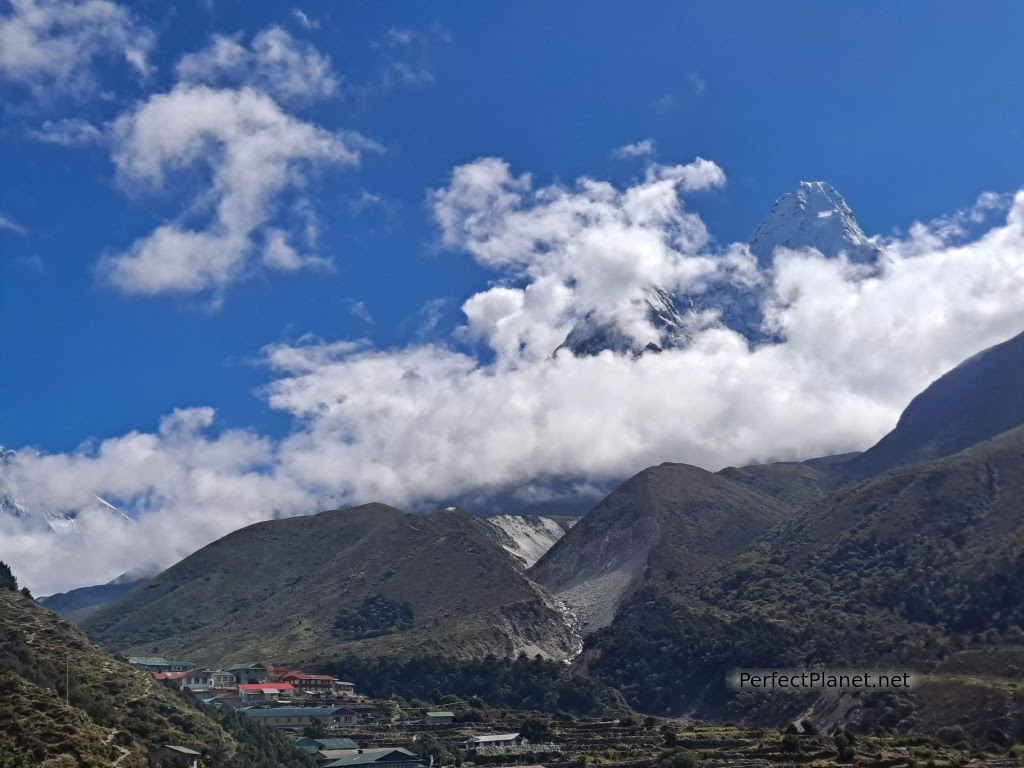
Ama Dablam
- Log in to post comments

